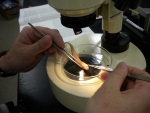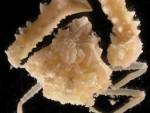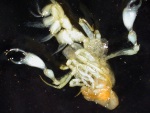Reef Fish Survey (RFS)
Marine Resources Monitoring, Assessment, and Prediction (MARMAP) &
Southeast Area Monitoring and Assessment Program South Atlantic (SEAMAP-SA)
Diet Studies
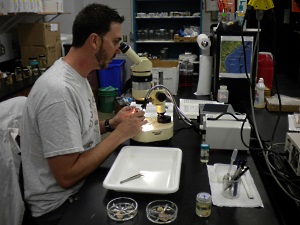
The analysis of fish diet composition has become a common discipline of fisheries ecology. Information that can be gained from diet studies such as habitat use, ontogenetic shifts, and natural mortality help researchers learn more about the biology and life history of individual species, while other information such as trophic interactions and resource overlap are essential to ecosystem modelling efforts.
The RFS initiated a diet study program in 2008, and to date over 450 unique prey items have been identified in the diets of over 2,500 predator specimens in our lab. Target predator species collected vary every few years and are determined by data needs and management priority. Recently studied species include Black Sea Bass, Red Porgy, Gray Triggerfish, Red Snapper, White Grunt, Vermillion Snapper, and several species of grouper.
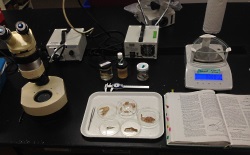
Upon capture of a target predator, whole stomachs are removed and preserved at sea, and then transported back to the laboratory. Back in the lab, all contents from each individual gut are sorted, identified to the lowest possible taxon, counted, measured, and weighed. Diet composition is quantified using a number of different metrics including percent by weight, percent by number, and percent frequency of occurrence.

